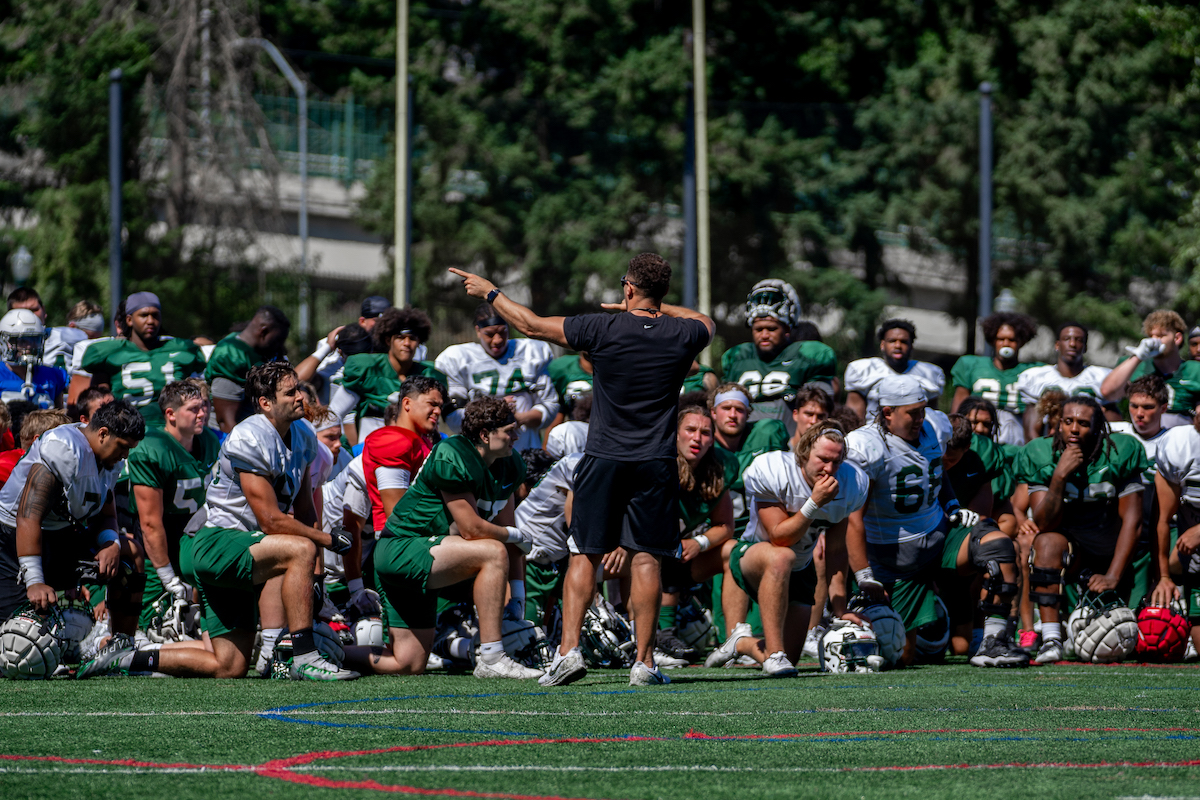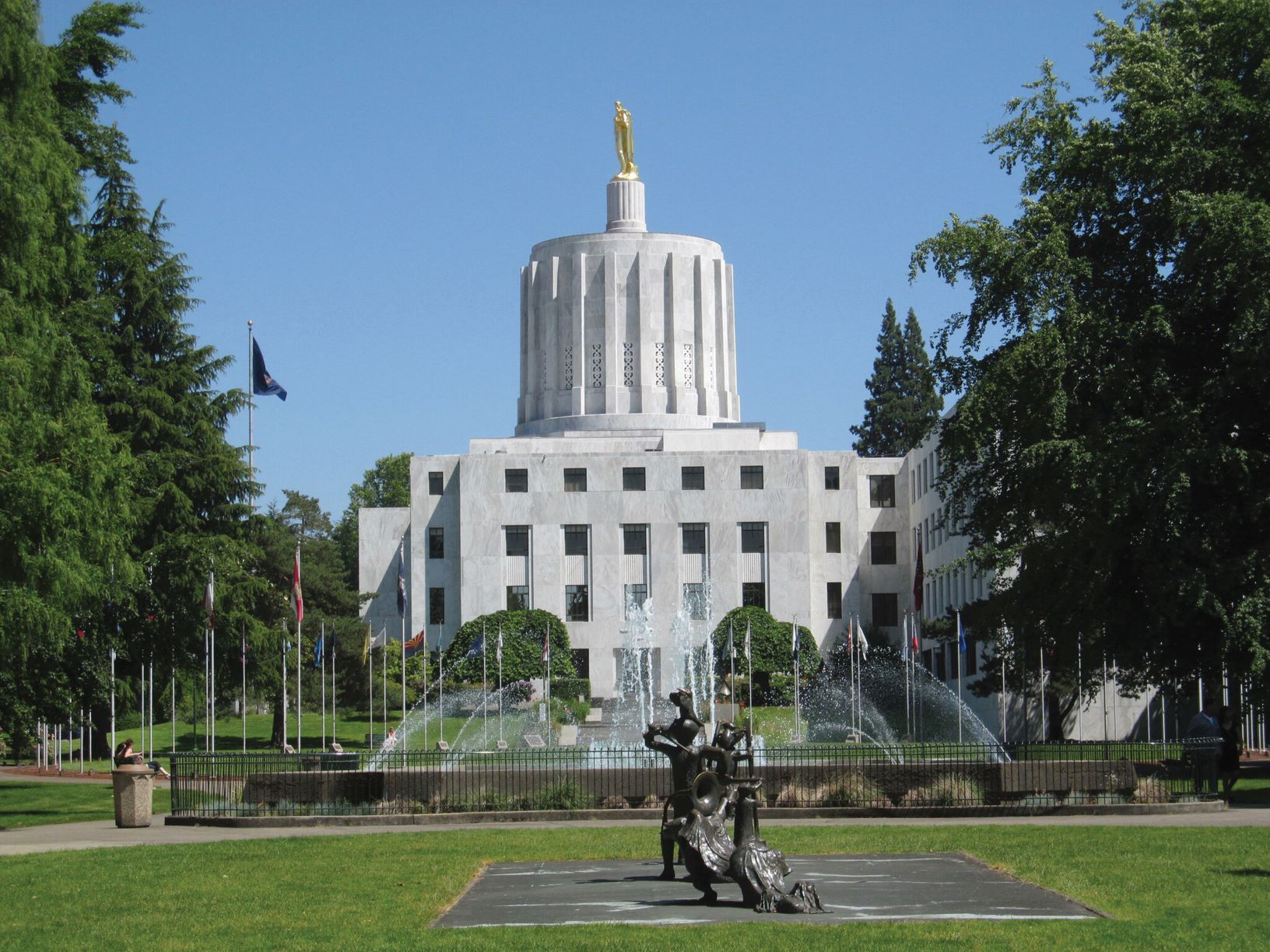The Viks recently faced the daunting task of playing against the University of Oregon Ducks—an in-state football powerhouse. The result was an 81-7 loss for Portland State. However, the financial implications are crucial to understanding college sports dynamics and how our football team earns money for its $15 million budget.
PSU’s game against Oregon was a classic example of a buy game—a practice where larger programs pay smaller ones for early-season matchups.
PSU is a program battling financial constraints which recently navigated a remarkable three-game stretch that vividly illustrates the economic challenges faced by universities competing in different divisions.
While the program generates revenue from various sources—including ticket sales, sponsorships and philanthropic contributions—it also incurs expenses related to operational and personnel costs.
The Report on the Status and Future of Intercollegiate Athletics at Portland State University was presented to former President Steven Percy and the Athletics Future Committee (AFC) and published back in Nov. 2021. According to this report, “the athletics department has sought to strike a balance between investing in the program’s growth and maintaining fiscal sustainability to ensure that it remains a contributing part of PSU’s overall financial landscape.”
It’s important to note that PSU belongs to the Football Championship Subdivision (FCS), while UO is part of the Football Bowl Subdivision (FBS). These divisions have varying scholarship requirements and postseason structures, with FBS institutions generally having more extensive resources and greater exposure.
In an interview with Gwinnett Daily Post, PSU’s Athletic Director John Johnson emphasized the necessity of games like the one against UO for resource acquisition. “You’ve got to play those games to put resources in your programs so you can grow your program,” Johnson says. “But that’s one of the quickest and easiest ways to do it other than getting playoffs and, you know, winning, but that helps pay the bills for not football necessarily, but for the rest of our programs that aren’t revenue generating by nature.” These matchups provide a means to infuse funds into the program and support non-revenue-generating sports within PSU athletics. However, it also raises questions about the financial sustainability of smaller programs like PSU.
PSU’s improbable journey also included an unconventional matchup against North American University, a team from the National Association of Intercollegiate Athletics (NAIA). NAIA represents a different tier of collegiate athletics, offering a cost-effective alternative for schools looking to manage their budgets more efficiently.
While PSU’s financial struggles in collegiate athletics garner attention, we are not the only school grappling with the complex question of why they invest millions in big-time football.
College football season brings with it the excitement of matchups between football powerhouses like University of Alabama, University of Southern California, Clemson University and University of Georgia. For these programs, the goals are clear-bowl games, championships and substantial revenue from TV deals. However, motivation behind participating in big-time football is less straightforward for many other schools.
Success on the gridiron can also foster a sense of community, attract students and stimulate donations. Certain schools such as the University of Notre Dame, Michigan State, and Penn State have leveraged their football income to become academic powerhouses.
According to the report, PSU’s non-conference scheduling reflects a delicate balance between generating revenue and maintaining competitive opportunities. The Big Sky Conference—of which PSU is a member—prescribes a specific scheduling format which includes a mix of guaranteed games and conference matches.
Securing home games is crucial for smaller programs such as PSU in order to generate interest and revenue, even if they have to be played in Hillsboro due to limited resources on campus.
In considering the future of PSU’s athletics program, the AFC has identified four options in the report. This is where the 2021 AFC report lends us the knowledge of the four options they thought could help build the ship. Each option comes with its own pros and cons.
“No Change in Program Offerings but Increase Institutional Support,” stated the first option. This aims to maintain PSU’s athletic program while advocating for increased institutional support. While this approach would cause the least disruption to the athletics department, it recognizes the need for additional resources to ensure competitiveness.
According to the report, PSU athletics has historically faced underfunding compared to peer institutions, which has hampered its ability to field competitive teams. Collegiate consulting data collected for the report revealed how universities with the most competitive success in Big Sky allocate budgets ranging from $18.3 million to $23.2 million—significantly higher than PSU’s allocation.
To maintain the current program, PSU must increase institutional support and develop a strategic plan for revenue generation from sources such as ticket sales, sponsorships and philanthropy.
However, pursuing this option involves challenges, including potential opposition within the PSU community to increased athletic investment and no guarantee of improved program competitiveness.
Additionally, PSU may need to consider building a football facility closer to campus, requiring donor support and a feasibility study. The evolving National Collegiate Athletics Association (NCAA) restructuring of college sports may also impact the viability of this option, potentially affecting scheduled football games and necessitating new revenue sources.
The second option entailed staying in NCAA Division I but eliminating football. This alternative proposes retaining PSU’s Division I status while discontinuing the football program. By eliminating football, PSU could reduce ongoing deficit spending, avoid the need for stadium improvements and potentially garner more support within the PSU community.
This option necessitates analyzing the impact on conference membership, as Big Sky mandates football participation. The university would need to secure a waiver or explore alternative Division I conferences.
Eliminating football would also require adding a new men’s sport to meet NCAA and Title IX requirements, which would entail some costs and time for development. Despite the challenges, this option could demonstrate PSU athletics’ commitment to shared sacrifice during a period of financial constraint.
The third option suggested is to move all athletics to a lower division—Division II or Division III—whether we keep the football team or not. This option involves moving PSU’s athletics to a lower NCAA division to potentially reduce costs by offering fewer sports and scholarships.
While this option aligns with the need to reduce expenses, it faces significant impediments, including a potential reduction in revenue and diminished alumni and donor engagement. PSU may also incur exit fees and penalties under existing contracts if it withdraws from its current conference or terminates football.
The committee acknowledged that the divisional landscape may evolve, but in the current structure this option may not be in PSU’s best interests without a more thorough analysis of its costs and disadvantages.
The final option entails phasing out intercollegiate athletics at PSU, which according to the report tended to be the least-favored option. While it would eliminate the current deficit spending, it would also result in the loss of numerous benefits, including academically high-achieving student leaders, brand awareness and philanthropic support. Club and intramural sports would continue, as they involve minimal institutional expenditure.
Ultimately, the committee advised against pursuing this option unless the university is unwilling to invest in any alternative and only after a comprehensive analysis of costs and disadvantages.
The financial health of the program hinges on various factors, with individual sports contributing differently to the bottom line. Universities consider football and basketball revenue-generating sports, while other sports may operate at a deficit. It is crucial to analyze the financial performance of each sport to ensure the program’s sustainability.
PSU’s financial journey underscores the multifaceted nature of collegiate athletics. Universities must navigate financial challenges, prioritize player safety and balance generating revenue and maintaining competitiveness.
The experience and money gained against UO are a microcosm of the broader economic disparities and strategic decisions collegiate athletic programs face nationwide.






